Attributed to Antoine-Robert Gaudreaus
Stamped twice with NB (probably for Nicolas Berthelmy)
Louis XV period, circa 1745
Customary restorations, modern leather, and later sabots at the feet
Dimensions: H. 78 x L. 163 x D. 78 cm
We have described the desk in our study as "exceptional," but why is this so? Besides its evident quality and aesthetics, the person who made it and its history are crucial elements in the value and interest of this piece. Indeed, how can one appreciate this desk without having seen its twin? A similar bureau plat was delivered in 1745 to Fontainebleau for the Dauphin, specifically for his study cabinet. Now preserved at the Château de Versailles (on deposit from the Mobilier National), it was part of a delivery of 18 other pieces by the famous cabinetmaker Antoine Robert Gaudreaus. Gaudreaus was the cabinetmaker for the Garde-Meuble de la Couronne, working for the most prominent clients of his time: the king, the queen, the Dauphine, Mesdames, Madame de Pompadour, etc.
Moreover, he never stamped his work for several reasons we will elaborate on later. Thus, the specific attribution of our desk to such a high-level cabinetmaker with few known certified works is highly valuable. To understand our desk, one must study the Dauphin’s desk.
Comparison with the Dauphin’s Desk:
The desk displayed at the Château de Versailles has some similarities and technical differences. Like many frames of that period, the structure is also made of pine. However, while our desk’s marquetry is amaranth, the Dauphin’s is in kingwood. Both feature diamond-point marquetry, a style much favored by Gaudreaus.
Regarding the bronzes, this model of the desk is adorned with rich gilt-bronze compositions, particularly original and significant. The moldings, side handles, two impressive dragon appliques on the sides, the four acanthus scrolls, and both desks share the same decor. In contrast, the four corner cartouches, the four drops, the two central keyhole escutcheons, and other sabots differ. It is interesting to focus mainly on the side bronzes with dragon motifs. They are extravagant in their theme and add character to the furniture. Gaudreaus had previously used them on the apron of a commode kept in the Hermitage Museum in Saint Petersburg (former Chouvalov collection). As for the acanthus scrolls, Daniel Alcouffe considers them "archaic" compared to the general dating of the desk: he compares them to those on the desk of Gaspard Moïse de Fontanieu, delivered in 1731 by Gaudreaus to Versailles (now kept at the Mobilier National).
Finally, the dimensions and general shape are somewhat different (the Fontainebleau desk: H. 79 x W. 145 x D. 77 cm). Ours is larger and has a distinct curvature. An interesting detail confirming the attribution to Antoine Robert Gaudreaus is the visible indentations under the lower line of the apron on both desks. This feature is also observed on Marie Leczinska's slant-top desk at Marly and the commode in the dining room of Mesdames at Versailles (indentation to be noticed in his work from 1733 onwards).
The Dauphin’s desk and documents related to its delivery provide valuable information for dating our desk. If the Dauphin's desk was delivered to the Garde-Meuble on August 19th, 1745 (with 18 other pieces after his marriage), our desk must have been situated around this period. Furthermore, we know Gaudreaus delivered at least 108 pieces in 1745 (some pages are missing from the Journal). Additionally, the bronzes on the Dauphin’s desk are stamped with the crowned C, in effect between March 1745 and January 1749. Gaudreaus died in 1746, leaving little room for an extended dating, making our piece one of the artist's last works.
We are very proud to present this desk, which has been featured in two books studying the Mobilier National desk: “Antoine Robert Gaudreaus, ébéniste sous Louis XV” (Daniel Alcouffe, Elisabeth Grall, Jean Perfettini, Editions Faton, 2021, dossier pages 294 to 299) and “Le château de Versailles raconte le Mobilier National” (Jean-Jacques Gautier, Bertrand Rondot, published on the occasion of the exhibition organized at the Château de Versailles, 2011, dossier pages 61 to 64).
Antoine Robert Gaudreaus (1680-1746):
To understand and appreciate Gaudreaus' work, one must delve into his biography and personality. Born around 1690 and died in 1746, Antoine Robert Gaudreaus did not come from a "furniture" family, as was customary, but from a father who was a shoemaker and a mother who was a gingerbread baker (Antoine Gaudreaus and Nicole Handouville) in the Faubourg Saint Antoine. The family was poor. He was the eldest of five siblings, for whom he became the guardian after his parents' death. He began his cabinetmaking training late (at 17, probably after a short career as a shoemaker with his father). His father placed him with a German-origin cabinetmaker, Goswein Neuser. The young Gaudreaus likely learned this craft from him as a marquetry maker specializing in Boulle marquetry. He then trained with Pierre Douay, a master in drawing, learning "to draw everything related to the cabinetmaking trade." This unprecedented and unusual training among other cabinetmakers already indicated his uniqueness. His apprenticeship ended in 1702, and by 1704, he called himself a "cabinetmaker." However, he does not seem to have worked in his own workshop and was received as a master in 1708. He married Marie Denise Maingot (the daughter of a spice merchant) in 1707, and they had a son, François Antoine 1710, who worked with him from age 16. They moved from the Faubourg Saint Antoine to the Faubourg Saint Germain. He took over from the cabinetmaker Guillemard, benefiting from his reputation early in his career. He then made his first deliveries to the Crown and the Prince of Monaco in 1726 under Guillemard’s name. He was quickly esteemed by his peers: elected juror of his community at only around forty years old, and he acted as an expert several times during inventories after death. Thus, he became the Garde-Meuble's cabinetmaker until his death, when the famous Thomas Joachim Hébert was his main competitor. In addition to supplying the royal residences, he also worked for prestigious clientele, such as the Duke du Maine and the Duke de Bouillon. He had a more aristocratic than bourgeois clientele. These clients were often bad payers, which allows us to know these patrons today through debt documents.
The use of a stamp was not mandatory at the beginning of his career, and his work for the Garde-Meuble exempted him from "signing." Therefore, his works are identified solely through archival documents. His orders were so significant that he quickly had to collaborate with other cabinetmakers and joiners. From 1726, he subcontracted with Nicolas Foureau, François Painsum, Etienne Doirat, François Mondon, Mathieu Criard, and Jacques Philippe Carel, among others. Several options were available for making his furniture: complete production by his workshop, contracting a third party for the case only, complete subcontracting with specific instructions, or even purchasing already designed furniture (likely from Cressent, for example), given his time constraints.
His work was greatly influenced by the Slotz brothers, who worked at the Garde-Meuble (appointed sculptors at the Menus-Plaisirs, then held the position of designer for the king's chamber and study). Documents testify to these relationships: three project drawings of furniture imposed on Gaudreaus are preserved today at the BNF. He is noted today for having mainly developed the role of bronze in his furniture. Two of the finest pieces of French furniture under Louis XV are attributed to him by historians: the medal cabinet at Versailles and the commode in the Wallace Collection.
Despite his success, he was never very wealthy. He did not seem to aspire to wealth (he likely did not consider becoming a marchand-mercier like Charles Hecquet, Jean Coulon, or Noël Gérard). Additionally, his prices seemed reasonable, and his wife kept their accounts particularly well. He died in 1746, and his son ended his career in the summer of 1751 and died in 1753.
When we look more closely at Gaudreaus' desk production, we know he supplied few desks to the Garde-Meuble: three desks to the Dauphin (two in kingwood in 1744 for Versailles and in 1745 for Fontanieu, and one in amaranth for Marly in 1749). He also delivered a few desks to high officials (Fleury, Fontanieu, governor of the Dauphin, the general guard Chanousse Ollivier).
How can we explain the existence of another desk so close to the Dauphin’s? Daniel Alcouffe wrote a monograph on Gaudreaus and believed he made at least one double for all important orders. This is explained by profitability: it was more economical to produce in small series than individually. Additionally, the very wealthy buyers could boast of owning almost royal furniture. Some details could make a slight difference, such as the use of gold color rather than gold powder, as evidenced by our desk and the one delivered to Fontainebleau.
Another question remains: what is the origin of the NB stamp? Even though no information links Gaudreaus to Nicolas Berthelmy, the probable author of the NB mark, several hypotheses suggest that he was likely a subcontractor for the frame of our desk. Master in 1735, he appears to have worked for several colleagues according to the latest findings by Daniel Alcouffe in his book "Les artisans décorateurs du bois au Faubourg Saint-Antoine sous le règne de Louis XIV.”


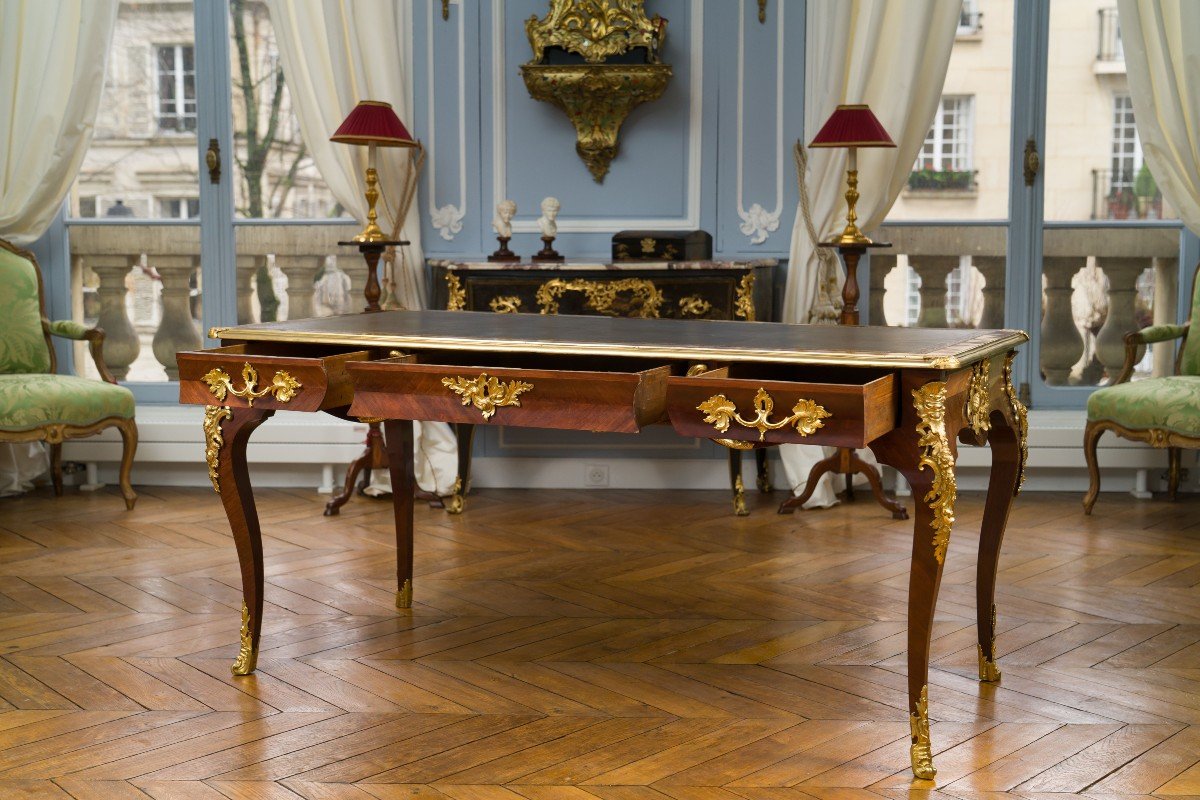
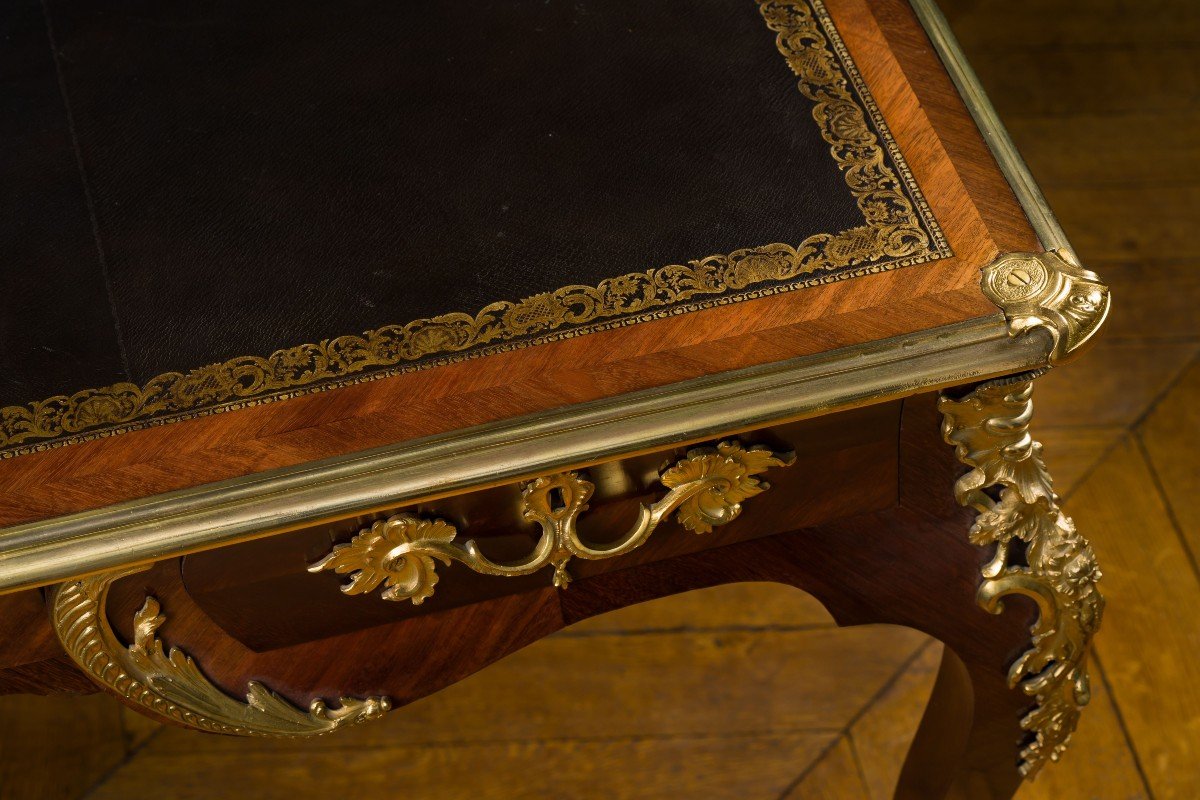
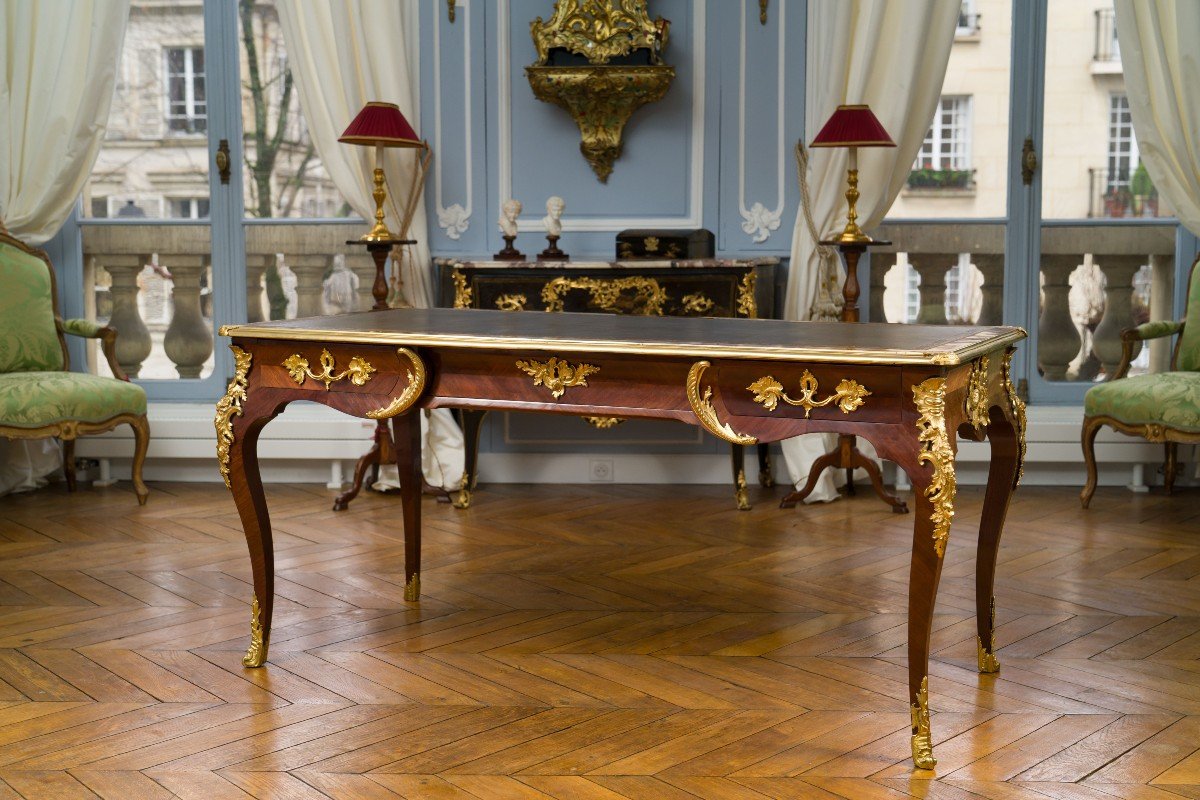
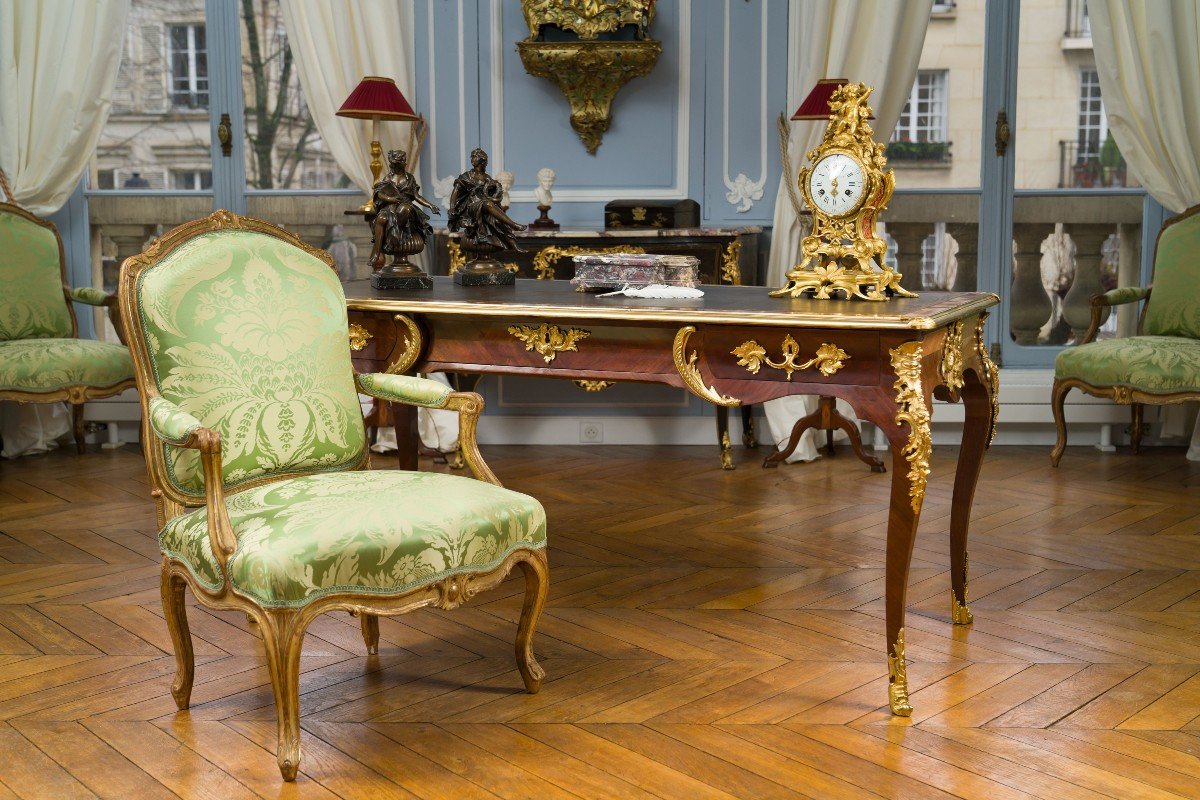
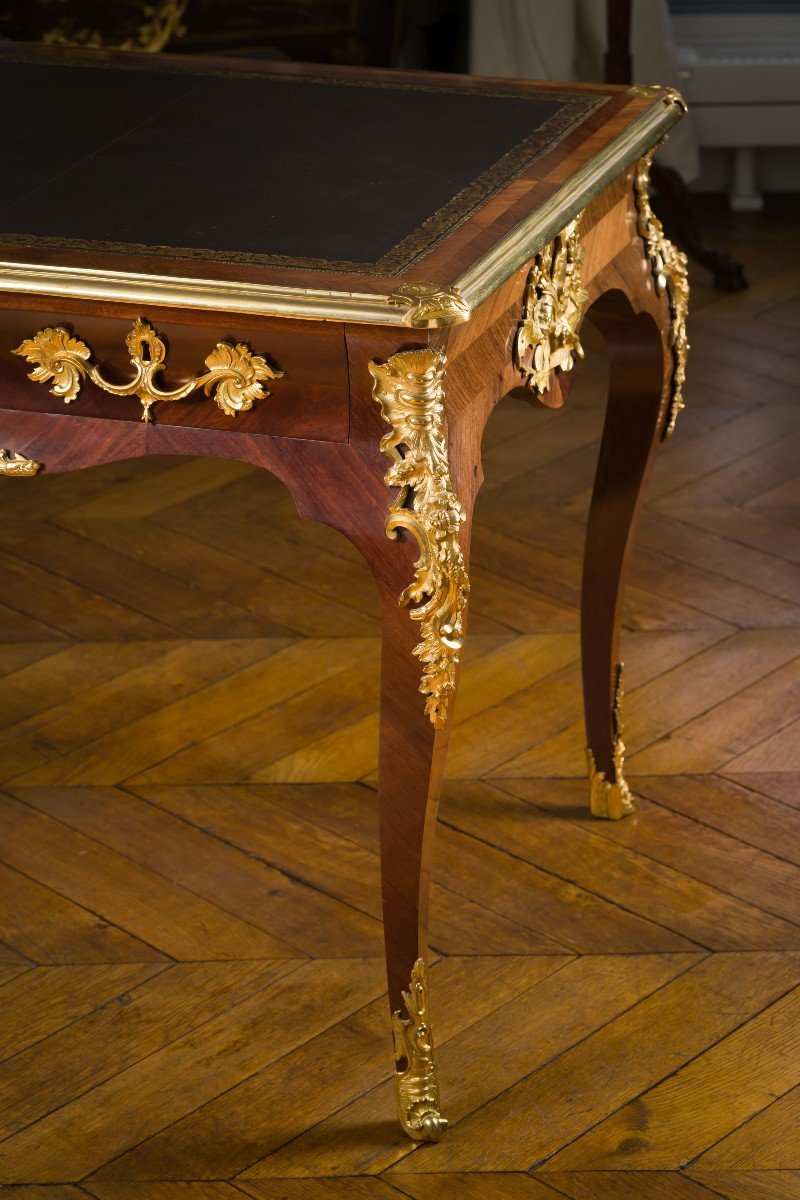
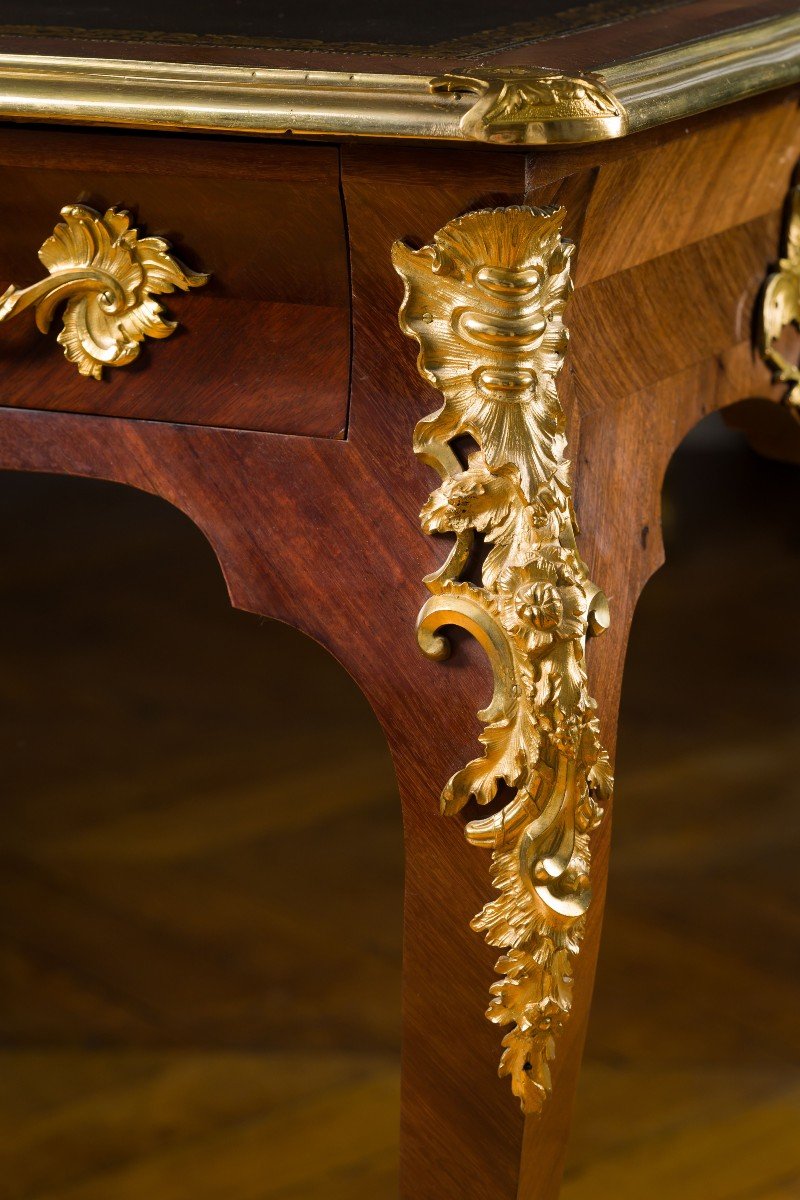
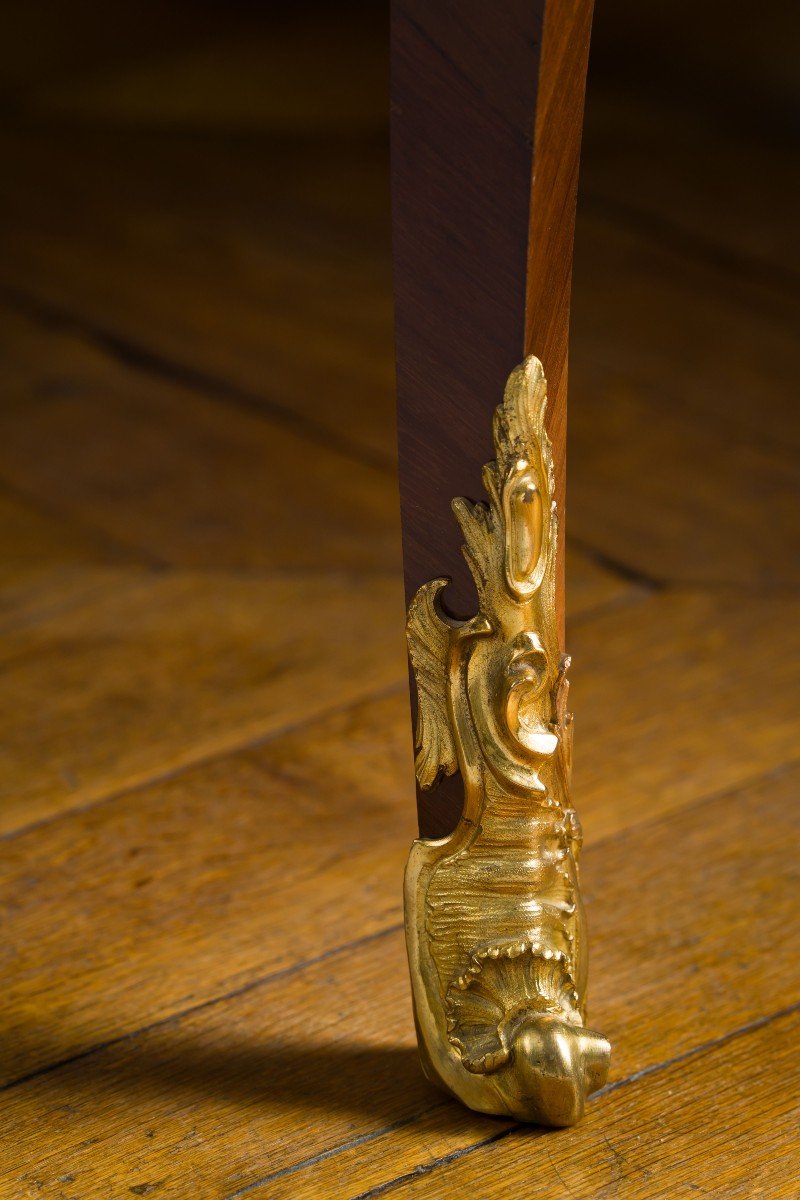
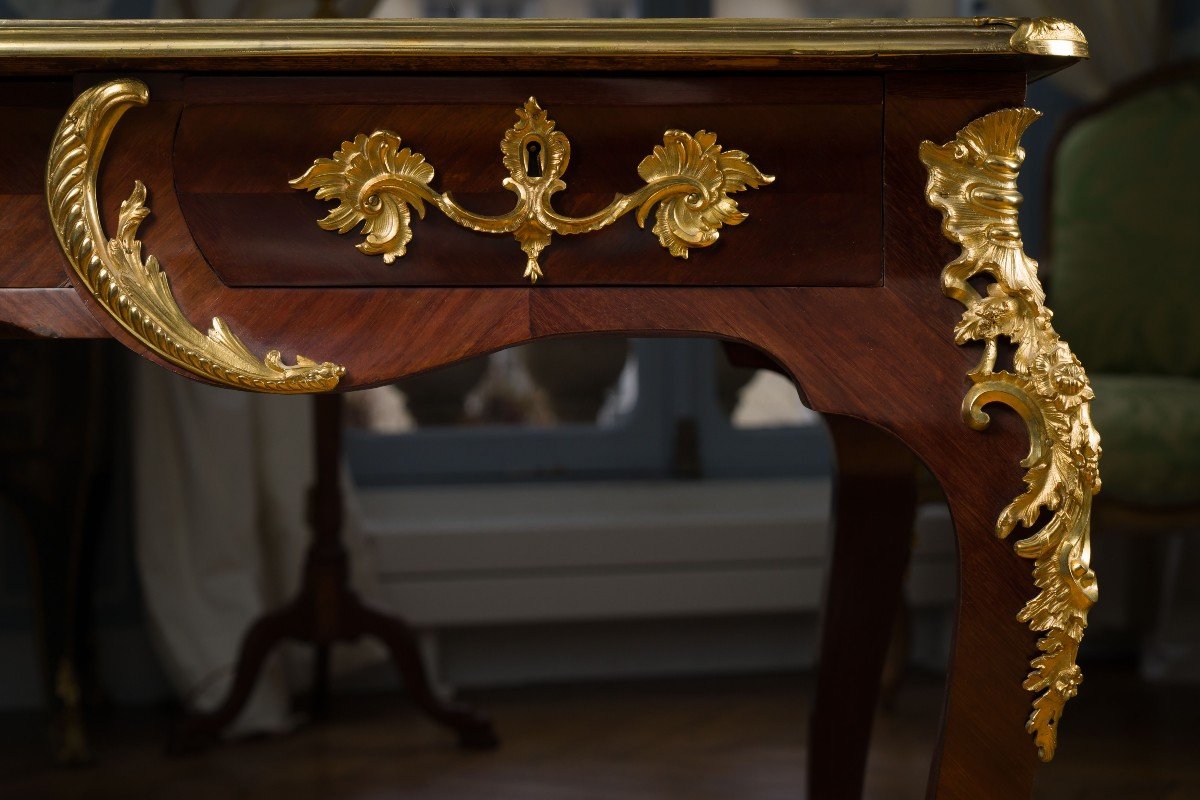
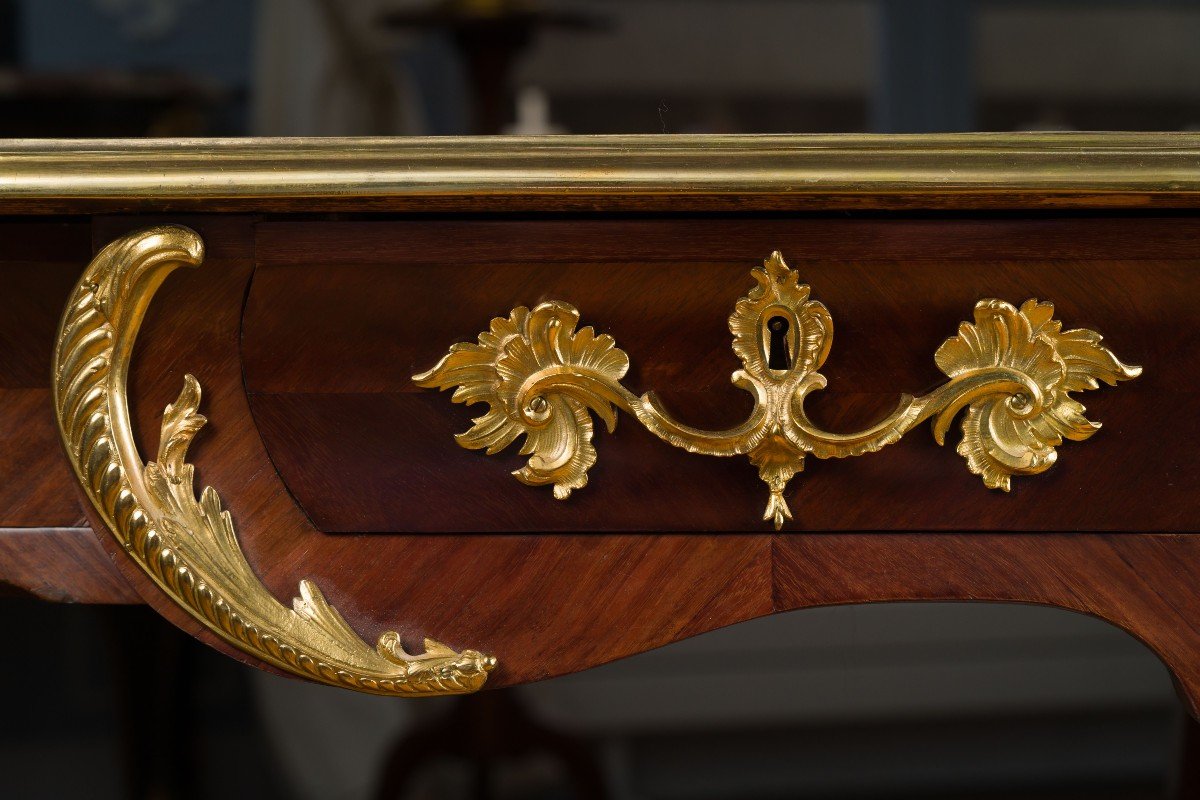
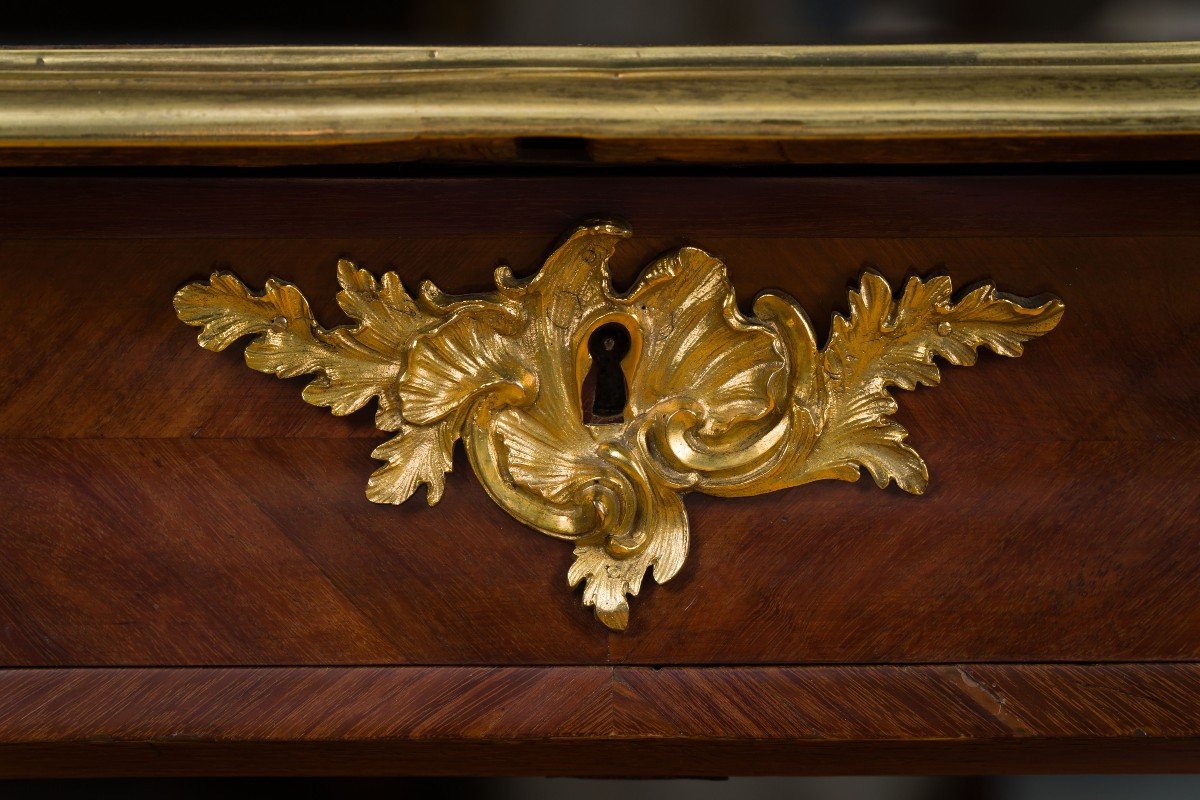













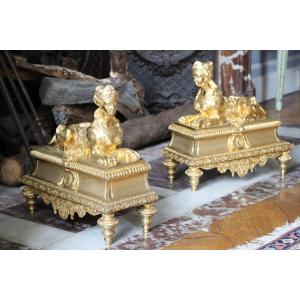
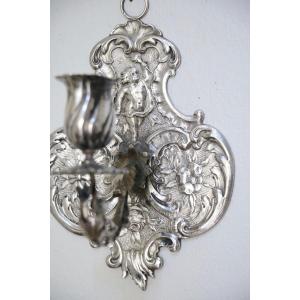
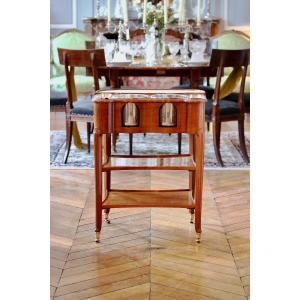
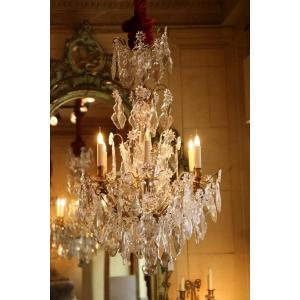
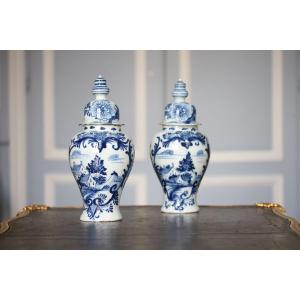


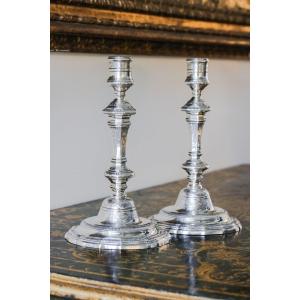


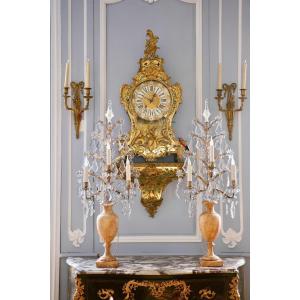
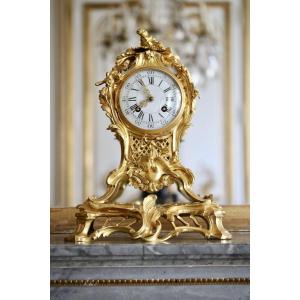
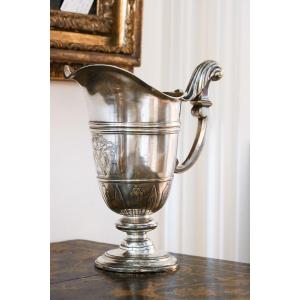
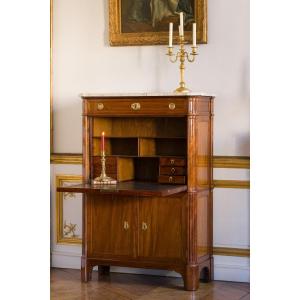
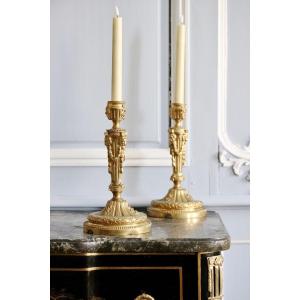








 Le Magazine de PROANTIC
Le Magazine de PROANTIC TRÉSORS Magazine
TRÉSORS Magazine Rivista Artiquariato
Rivista Artiquariato